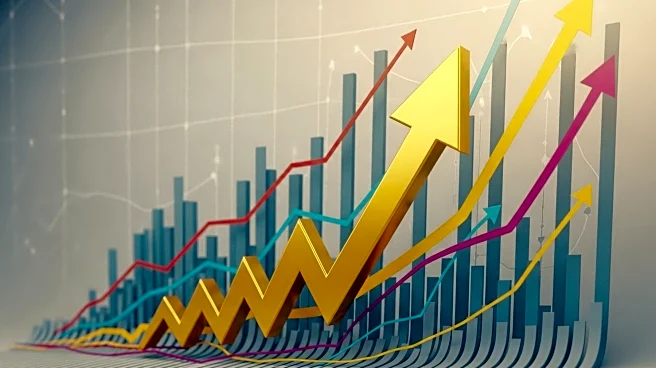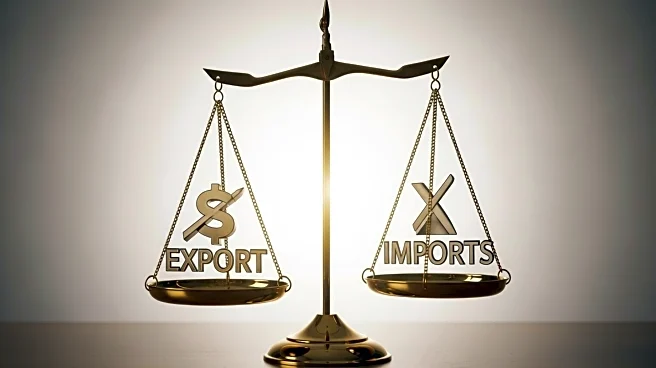What's Happening?
The U.S. economy experienced its fastest growth in nearly two years during the second quarter, with the gross domestic product (GDP) increasing at an annualized rate of 3.8%, according to the Commerce Department's Bureau of Economic Analysis. This growth was driven by strong consumer spending and a significant reduction in the trade deficit, as imports slowed following a record surge in the first quarter. The revised GDP figures reflect a sharp rebound from a contraction in the first quarter, where the economy shrank at a 0.6% pace. The data suggests that further interest rate cuts from the Federal Reserve may not be necessary, as the economy remains resilient despite uncertainties from trade policy.
Why It's Important?
The robust GDP growth highlights the resilience of the U.S. economy amid ongoing trade policy uncertainties. The reduction in the trade deficit contributed significantly to the GDP increase, adding a record 4.83 percentage points to growth. This development underscores the impact of trade dynamics on economic performance, as businesses adjusted to import duties and tariffs. The strong consumer spending, which accounts for more than two-thirds of the economy, further supports economic stability. However, the lingering effects of trade policy may limit growth in the second half of the year, with economists predicting a tepid expansion. The economy's performance will be closely watched by policymakers and stakeholders as they navigate the complexities of trade and economic policy.
What's Next?
Economists expect slower growth in the second half of the year due to ongoing trade policy uncertainties, which could limit economic expansion to about 1.5% for the full year. The Federal Reserve's interest rate decisions will be influenced by economic indicators, including job growth and consumer spending. As businesses continue to adapt to trade dynamics, the focus will be on maintaining economic stability and addressing potential challenges. Policymakers may need to consider strategies to support growth amid trade uncertainties, while businesses and consumers adjust to changing economic conditions.
Beyond the Headlines
The economic growth figures reflect broader implications for U.S. trade policy and its impact on domestic industries. The reduction in the trade deficit highlights the importance of balancing import duties with economic growth objectives. As businesses navigate the complexities of trade policy, there may be shifts in supply chain strategies and investment decisions. The resilience of consumer spending underscores the role of domestic demand in supporting economic stability, even amid external uncertainties. The interplay between trade policy and economic performance will continue to shape the U.S. economic landscape, influencing policy decisions and business strategies.











